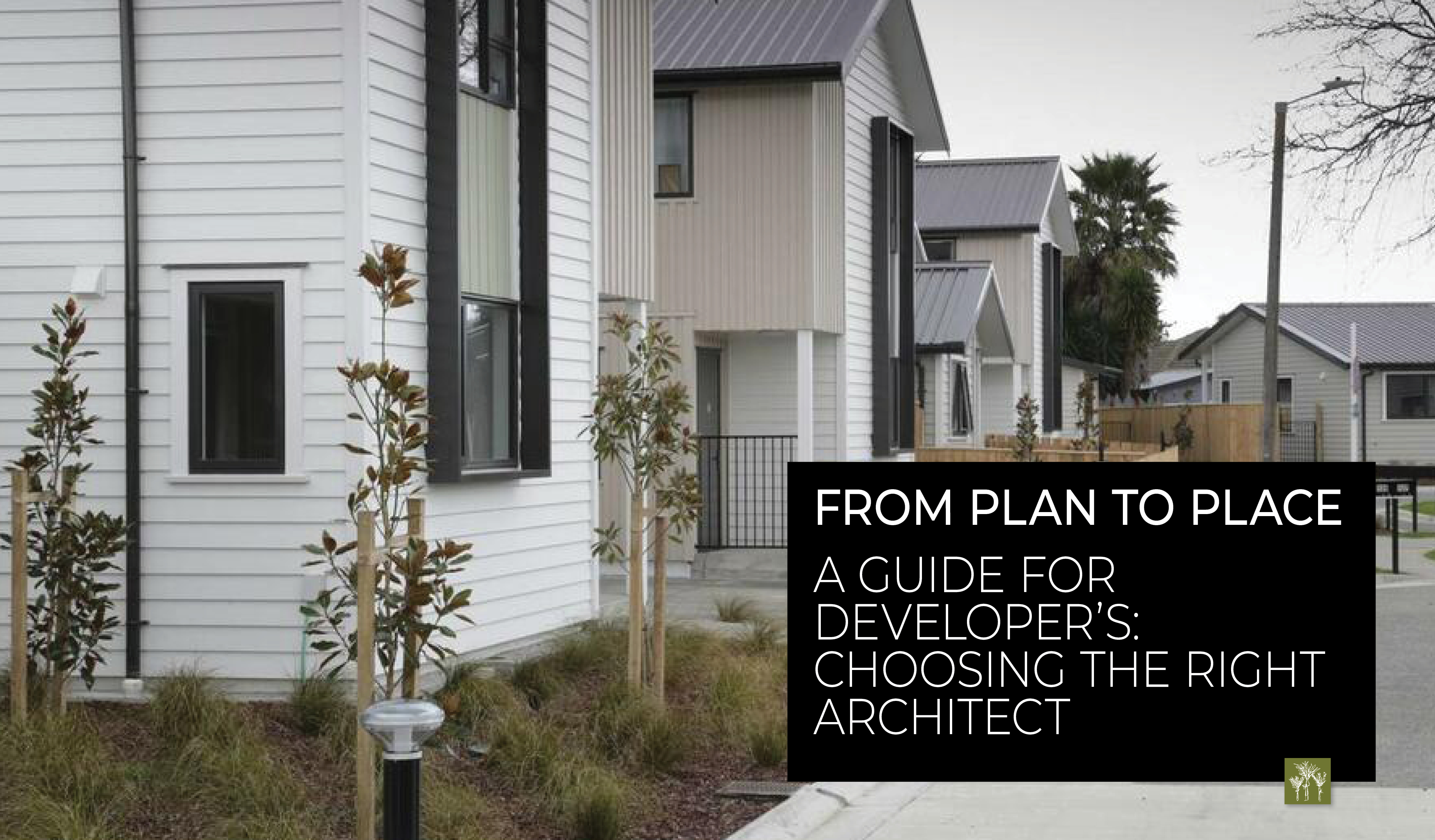Whether you're developing multi-unit housing, retirement living communities, or mixed-use precincts, choosing the right architect is one of the most critical decisions you'll make. In Aotearoa New Zealand, where our built environment must respond to diverse landscapes, cultural values, and evolving community needs, the architect you partner with can make or break your project.
Having worked alongside developers across the country - from large-scale urban intensification to bespoke retirement villages, here’s what we believe every developer should know when selecting an Architect.
1. Look Beyond the Portfolio
A strong portfolio is important, but it’s only part of the story. Ask:
- How did the architect respond to site constraints and opportunities?
- Were the projects delivered on time and within budget?
- How did the design perform post-occupancy - was it adaptable, efficient, and well-received?
Climate, topography, and community expectations vary widely in New Zealand, so contextual thinking is just as important as visual flair.
2. Prioritise Strategic Thinking
Good Architects don’t just draw, they think. The right Architect will help you:
- Navigate planning and consenting processes, including local council requirements and national standards.
- Maximise site potential through smart orientation, density, and circulation strategies.
- Identify risks early, saving time and money down the track.
Especially in multi-unit and retirement developments, strategic design can unlock long-term operational efficiencies and resident satisfaction.
3. Choose a Collaborator, Not Just a Consultant
Architecture is a team sport. Your Architect should be able to work seamlessly with engineers, planners, quantity surveyors, and project managers. Look for someone who:
- Communicates clearly and proactively.
- Understands the commercial realities of development.
- Respects the expertise of other consultants while advocating for design quality.
In our experience, the most successful projects are built on trust, transparency, and shared goals.
4. Demand Design That Delivers
Design isn’t just about aesthetics - it’s about performance. Ask your Architect how they’ll deliver:
- Passive design strategies to reduce energy costs.
- Flexible layouts that adapt to changing user needs.
- Durable materials suited to New Zealand’s climate and seismic conditions.
For retirement living, this might mean designing for ageing in place. For multi-unit housing, it could mean balancing privacy with community connection. Either way, design must serve the people who’ll live, work, and interact within the space.
5. Insist on Cultural and Environmental Responsiveness
In Aotearoa, Architecture must reflect our bicultural foundations and environmental responsibilities. Your Architect should be able to:
- Integrate Te Ao Māori principles meaningfully, not superficially.
- Design for climate resilience, water sensitivity, and low-carbon construction.
- Engage with local communities where appropriate.
This isn’t just about compliance - it’s about creating places that are respectful, inclusive, and future-ready.
Conclusion: The Right Architect Is a Strategic Asset
Choosing an Architect isn’t just a procurement decision - it’s a partnership. The right Architect will help you realise your vision, manage complexity, and deliver a place that performs for decades to come.
So ask the hard questions, look for alignment in values, and choose someone who understands the unique challenges and opportunities of developing in Aotearoa. From plan to place, architecture is the thread that ties it all together.





